turnovers
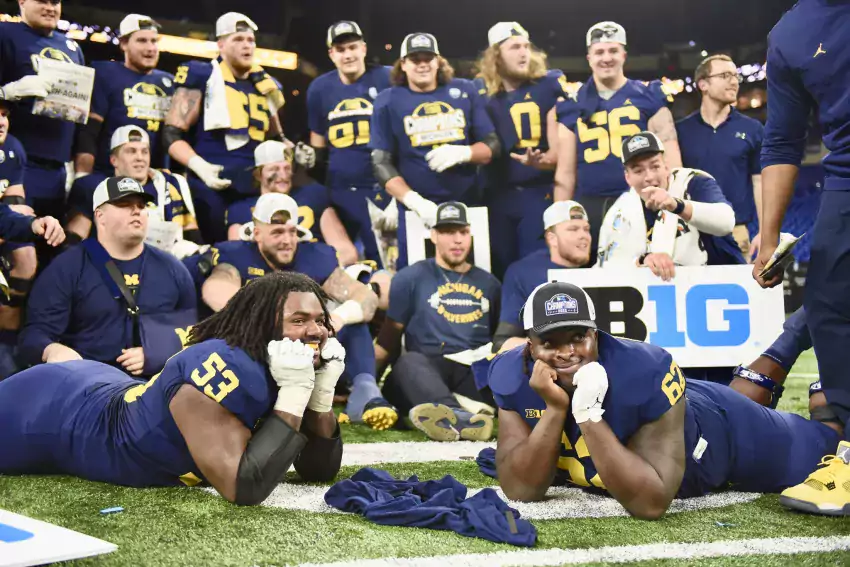
Podcast 15.0A, 15.0B, 15.0C. The Story. Quarterback. Running Back. Wide Receiver. Tight End. Interior OL. Defensive Interior. Edge. Linebacker. Cornerback. Safety. Special Teams. 5Q5A Offense.
Heuristicland
Turnover Margin
The theory of turnover margin: it is pretty random. Teams that find themselves at one end or the other at the end of the year are likely to rebound towards the average. So teams towards the top will tend to be overrated and vice versa. Nonrandom factors to evaluate: quarterback experience, quarterback pressure applied and received, and odd running backs like Mike Hart who just don't fumble.
I'm dumping the chart from this section because I was squinting at it and couldn't figure out if it said anything meaningful. Revamp.
FUMBLES. Michigan fumbled 15 times last year, losing four. That's fortunate; studies have generally shown that there is no repeatability to fumble recoveries and everyone regresses to 50%. The main culprit here was McCarthy, who was charged with nine; Corum had one, Stokes had one, Edwards had two, and Ronnie Bell had two. QB fumbles are often a combination of youth and bad pass protection, so hopefully Michigan will be able to reduce the raw numbers here; otherwise turnovers should scoot up.
OPPONENT FUMBLES. Michigan only forced two last year, a major dropoff from the 11 they forced in 2021. Seven of those came from the DE, so the recipe here is clear: get to the QB. PFF does not chart "oops" fumbles so I'm not 100% sure how many times opponents put the ball on the turf themselves last year; Michigan only recovered four on the season so they can't backslide any further here.
INTERCEPTIONS. Opponents converted 13 turnover-worthy passes from McCarthy into six interceptions. If pass pro remains steady McCarthy should drop that number of potential INTs.
OPPONENT INTERCEPTIONS. Michigan improved from 2021, when they had a 50% conversion rate on interception opportunities (8/16). Last year they were 14/19, with Will Johnson and Rod Moore leading the way. Their ratio of PBUs to interception opportunities also went up a bit. With Moore back and Johnson emerging into a full-time starter this should remain relatively high, especially if Michigan cranks its pass rush back up. Their 14 INTs were tied for fifth in the Big Ten.
UPSHOT. Michigan was third in TO margin last year in the league with a +8; they were fortunate not to lose two or three more fumbles and should have finished in the middle of the pack. Baseline expectations should be improvement since McCarthy was the source of most fumbles and (obviously) all interceptions; he moves from a true sophomore to a junior and will be more responsible.
Meanwhile Michigan's pass rush should be more consistent in big games and it has a couple of real ballhawks in the secondary. They should at least tread water; improvement is likely. (Insofar as anything is likely with such a high randomness thing.)
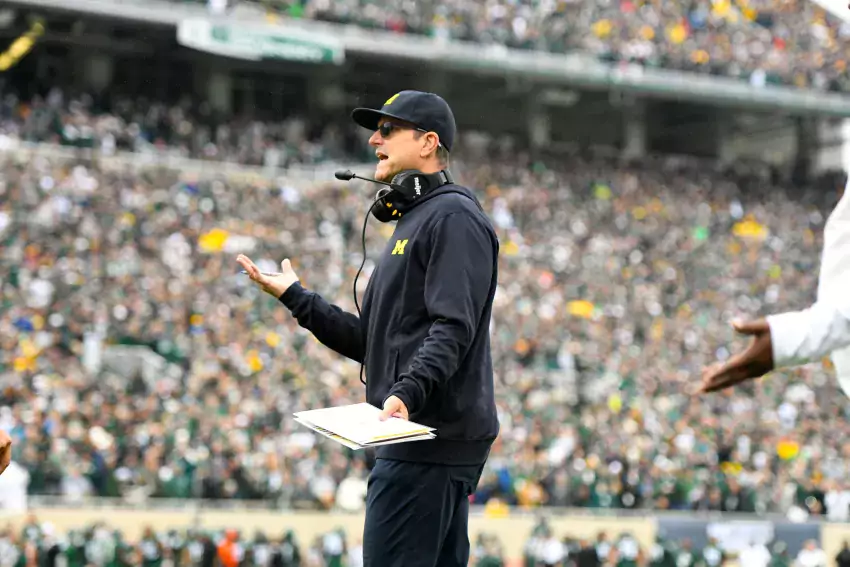
Previously: Podcast 14.0A, 14.0B, 14.0C. The Story. Quarterback. Running Back. Wide Receiver. Tight End. Offensive Tackle. Interior OL. Defensive Interior. Edge. Linebacker. Cornerback. Safety. Special Teams. 5Q5A Offense. 5Q5A Defense.
Heuristicland
Turnover Margin
The theory of turnover margin: it is pretty random. Teams that find themselves at one end or the other at the end of the year are likely to rebound towards the average. So teams towards the top will tend to be overrated and vice versa. Nonrandom factors to evaluate: quarterback experience, quarterback pressure applied and received, and odd running backs like Mike Hart who just don't fumble.
| Year | Margin | Int + | Fumb + | Sacks + | Int - | Fumb - | Sacks - |
|---|---|---|---|---|---|---|---|
| 2007 | 0.15 (41st) | 14 | 15 | 2.46(33rd) | 14 | 13 | 2.17 (67th) |
| 2008 | -.83 (104th) | 9 | 11 | 2.42(33rd) | 12 | 18 | 1.83 (57th) |
| 2009 | -1.00 (115th) | 11 | 5 | 1.83(68th) | 15 | 13 | 2.33 (83rd) |
| 2010 | -0.77(109th) | 12 | 7 | 1.38(98th) | 15 | 14 | 0.85(10th) |
| 2011 | +0.54 (25th) | 9 | 20 | 2.31 (29th) | 16 | 6 | 1.38 (33rd) |
| 2012 | -0.69 (99th) | 7 | 11 | 1.69 (69th) | 19 | 8 | 1.38 (28th) |
| 2013 | +0.38(33rd) | 17 | 9 | 1.9 (64th) | 13 | 8 | 2.77 (109th) |
| 2014 | -1.33 (124th) | 5 | 5 | 2.4 (49th) | 18 | 8 | 2.2 (63rd) |
| 2015 | -0.31 (92nd) | 10 | 2 | 2.5 (32nd) | 10 | 6 | 1.4 (28th) |
| 2016 | +0.54 (24th) | 13 | 6 | 3.54(5th) | 7 | 5 | 1.69 (39th) |
| 2017 | -0.31 (90th) | 10 | 7 | 3.23(8th) | 10 | 11 | 2.77 (111th) |
| 2018 | +0.38 (35th) | 11 | 6 | 10.5% (3rd) | 9 | 3 | 5.4% (43rd) |
| 2019 | +0 | 9 | 11 | 9.0% (16th) | 9 | 11 | 6.1% (61st) |
| 2020 | +0.38 (35th) | 11 | 6 | 10.5% (3rd) | 9 | 3 | 5.4% (43rd) |
| 2021 | +0.14 (56th) | 8 | 8 | 6.8% (62nd) | 5 | 9 | 3.3% (6th) |
Despite having extremely good turnover avoidance Michigan was almost dead even a year ago. The QBs and most of the OL return so sack avoidance should still stay high. The pressure number for Michigan is distorted by the inevitability of Hutchinson—most teams did a lot of dinking. I mostly include this in case Michigan is extraordinarily lucky or unlucky and can expect some regression. This doesn't look like much of anything, projection-wise.
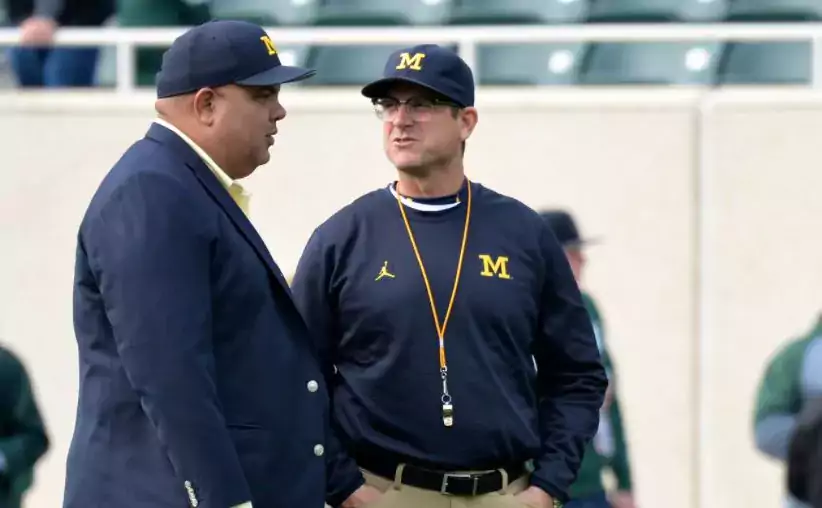
Previously: The Story. Podcast 13.0A. Podcast 13.0B. Podcast 13.0C. 5Q5A Offense. 5Q5A Defense. 2020 Heuristics.
Heuristicland
Turnover Margin
The theory of turnover margin: it is pretty random. Teams that find themselves at one end or the other at the end of the year are likely to rebound towards the average. So teams towards the top will tend to be overrated and vice versa. Nonrandom factors to evaluate: quarterback experience, quarterback pressure applied and received, and odd running backs like Mike Hart who just don't fumble.
| TO THE GOOD | TO THE PAIN | ||||||||
|---|---|---|---|---|---|---|---|---|---|
| Year | Margin | Int + | Fumb + | Sacks + | Int - | Fumb - | Sacks - | ||
| 2007 | 0.15 (41st) | 14 | 15 | 2.46(33rd) | 14 | 13 | 2.17 (67th) | ||
| 2008 | -0.83 (104th) | 9 | 11 | 2.42(33rd) | 12 | 18 | 1.83 (57th) | ||
| 2009 | -1.00 (115th) | 11 | 5 | 1.83(68th) | 15 | 13 | 2.33 (83rd) | ||
| 2010 | -0.77(109th) | 12 | 7 | 1.38(98th) | 15 | 14 | 0.85(10th) | ||
| 2011 | +0.54 (25th) | 9 | 20 | 2.31 (29th) | 16 | 6 | 1.38 (33rd) | ||
| 2012 | -0.69 (99th) | 7 | 11 | 1.69 (69th) | 19 | 8 | 1.38 (28th) | ||
| 2013 | +0.38(33rd) | 17 | 9 | 1.9 (64th) | 13 | 8 | 2.77 (109th) | ||
| 2014 | -1.33 (124th) | 5 | 5 | 2.4 (49th) | 18 | 8 | 2.2 (63rd) | ||
| 2015 | -0.31 (92nd) | 10 | 2 | 2.5 (32nd) | 10 | 6 | 1.4 (28th) | ||
| 2016 | +0.54 (24th) | 13 | 6 | 3.54(5th) | 7 | 5 | 1.69 (39th) | ||
| 2017 | -0.31 (90th) | 10 | 7 | 3.23(8th) | 10 | 11 | 2.77 (111th) | ||
| 2018 | +0.38 (35th) | 11 | 6 | 10.5% (3rd) | 9 | 3 | 5.4% (43rd) | ||
| 2019 | +0 (61st) | 9 | 11 | 9.0% (16th) | 9 | 11 | 6.1% (61st) | ||
| 2020 | -0.50 (96th) | 2 | 1 | 4.1% (111th) | 4 | 2 | 3.6% (11th) | ||
Other than “worst sack rate in program history” how was the play? Mathlete put together an adjusted sack rate that accounted for things like opponents and the likelihood of sacks by down and distance, and Michigan’s defense was 61st if that helps you sleep better. Their offensive sack rate dropped to 45th by that measure. It was a weird, weird year.
Anyway it was not a year the turnover gods loved Michigan. If you try hard enough you can name all nine events. I can think of a could of dropped INTs along the way. The only thing I have to add is that in non-garbage time Ohio State picked up 8 of their opponents’ 9 fumbles and lost 1 of their 4, giving them the best fumble luck in the country. They were 2nd in adjusted sack rate so some of that was earned, but also 113th in adjusted sack rate (101st true) on offense so they should have given those back. Just thought you should know.
At such low samples this stuff doesn’t mean much. If you want to add “snakebit” to the jellyfish, pufferfish, striated surgeonfish, scorpion, hooded pitohui, dart frog, and Pfeffer’s flamboyant cuttlefish and Spartan wide receivers that punctured Michigan’s hide last year, be my guest.
[After the JUMP: Things that might mean more]

i mean anything could happen but there's a bump in the distribution
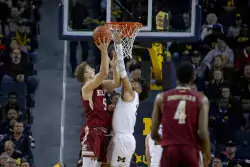
i don't know why it's so hard to have a giant aquaman trident laying around
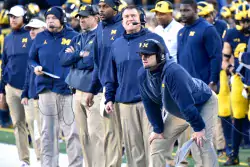
Vegas is too enthusiastic it makes me nervous
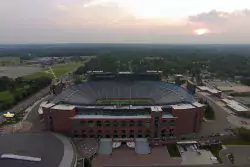
do you ever get the feeling you've been locked in a box for a week

"so here's the thing about this monkey... he's really good at stocks"
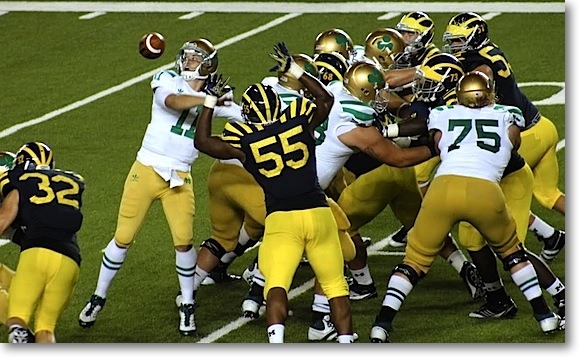

55